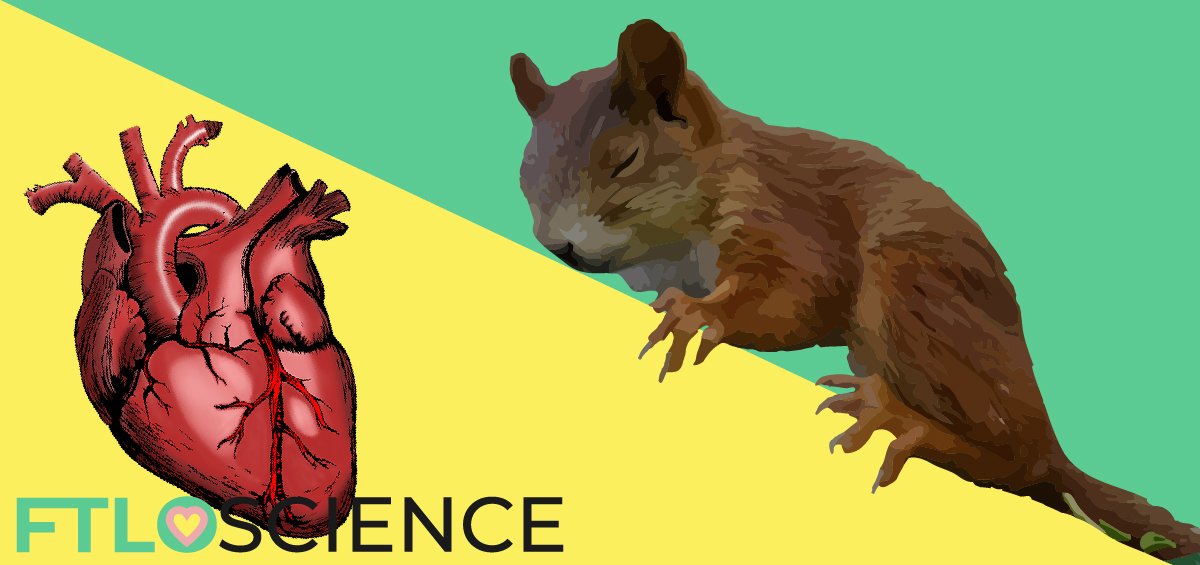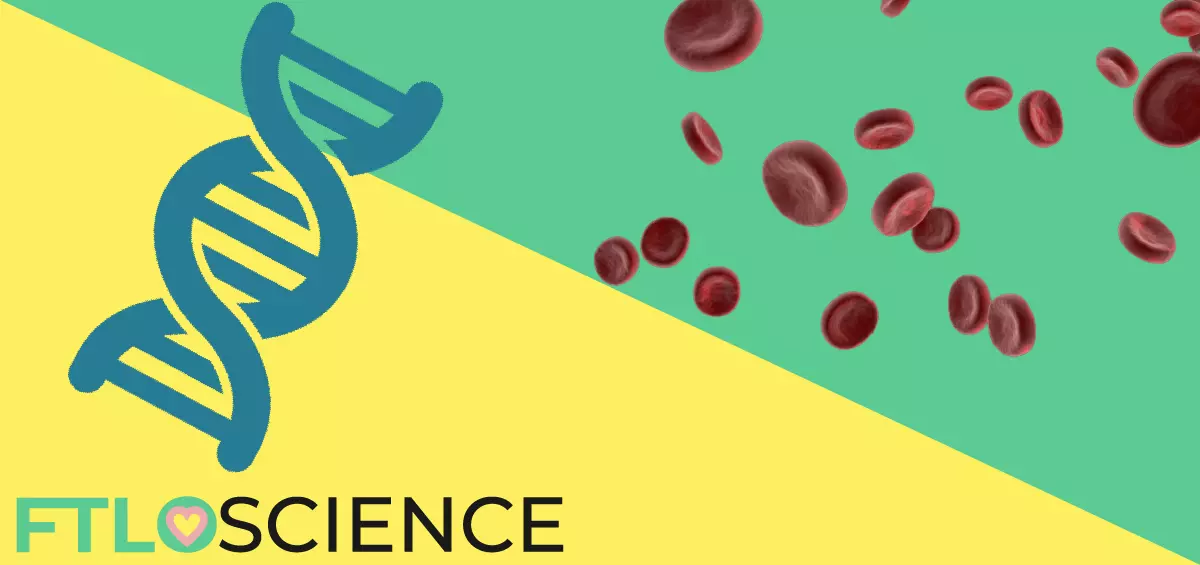As winter approaches, squirrels collect nuts while bears gorge on food to gain fat for energy and insulation. Animals of all sizes prepare for hibernation, in which they may sleep for up to seven months; definitely something many of us would like to try. Hibernating animals can go for extended periods without eating and drinking, while it is also common for them to reduce their breathing activity and metabolism. How do animals hibernate, and what can squirrel hibernation teach us about new therapies for stroke patients?
Hibernation: The Long Nap
Winter in the wild isn’t a warm fireplace surrounded by hot food and great company. Far from comfortable, winters are harsh periods with little food and an unforgiving environment. But some animals have found a way to improve their chances of survival by ‘skipping’ winter altogether! Hibernation is the process of passing a period of time inactive, with reduced body temperature and metabolism.
True hibernation is only observed in endotherms, also known as ‘warm-blooded’ animals. It is characterized by a suppression of metabolism to conserve energy, which results in decreased body temperature and inactivity.
While cold-blooded animals like fish and reptiles may also experience periods of low activity, they cannot actively reduce their body temperature or metabolic rate. In the winter, many fish have to endure temperatures close to freezing and hence their metabolism naturally decreases.

Smaller animals like squirrels tend to have a higher metabolic rate, which means hibernation benefits them better as they will save more energy. A mouse’s metabolic rate, for example, is around 20 times higher than that of a sheep1.
It is important to note that while hibernating, the animal itself is extremely vulnerable, therefore the benefits of hibernation have to be great; as a result, it is rare to find larger animals hibernating. Many species of bears love doing it anyway, but probably because few natural predators exist that can attack them in their sleep.
Unlike bears, squirrels do not have huge fat stores and have to store their food outside their body. Squirrel hibernation is characterized by a frantic search for food, hoarding it away to prepare for an extended stay-home notice. During hibernation, their metabolism can drop to as little as 1% of their active rate.
Hibernation periods of animals vary from just a few days up to several months, depending on the area, temperature and species. Rodents like dormice can hibernate for around 6 months, sometimes even longer1.
The Hibernation Process
While hibernation may be classified as simply a very long sleep, there are certainly biochemical differences between the two processes. It turns out that the model animal to study hibernation in is the alpine marmot, as they can spend 9 months each year in this state. Their hibernation cycle consists of 4 different stages: entrance into hibernation, maintenance of deep hibernation, arousal and a euthermic period. In alpine marmots, each cycle lasts around 15 days and animals undergo 15 to 20 such cycles in a season.
Entry into hibernation is characterized by a rapid decrease in metabolic rate, body temperature and heart rate. It is not fully understood how hibernation is triggered, but we know that animals can produce certain ‘hibernation chemicals’. Research into these may provide medical benefits, such as their potential use in preserving organs before transplant2.
Following this comes sustaining the state of hibernation, which lasts several days. The heart rate decreases to a minimum while ventilation (breathing) also slows, leading to periods of apnea where the breathing mechanism is ‘paused’. During this time, the alpine marmot’s heart rate slows to five beats per minute and its breathing to 1-3 breaths per minute. Oxygen deficiency is not a problem for hibernators, as they can recycle air through their trachea without excessive breathing.
Deep hibernation is terminated by the stage of arousal in which the animal wakes from its torpor. This is followed by the euthermic period lasting 1-2 days, to slowly warm up and return metabolism to normal levels. Cycling between stages requires a lot of energy and time, also leaving the animal vulnerable to predation.

These four stages are similar in all studied hibernators; however, some animals experience this on a daily cycle with the hibernation period around 12 hours a day. While still considered hibernation, this is known as daily torpor and is not restricted to the winter months. While hibernating saves around 90% of energy requirements, daily torpor saves 60 to 70%3.
Though physiological mechanisms and biochemical reactions are only partly known, some theories have already been established. One of the main features of hibernation is the decrease of adenosine triphosphate (ATP) synthesis and the inhibition of activities that require ATP.
This has been shown by reduced respiration in the mitochondria, a process that is responsible for the conversion of stored energy to ATP. Cellular processes like transcription and translation require large amounts of ATP to take place and are therefore inhibited to conserve energy3. Glycolysis (the metabolism of the sugar glucose) in the liver is reduced by inhibiting glycogen phosphorylase4.
Squirrel Hibernation and Brain Injuries
One of the most interesting properties of hibernation is the protection of organ function despite a lack of blood and oxygen supply. In studies of squirrels that had suffered head injuries, hibernating squirrels showed less brain damage than non-hibernating ones5. This discovery led to the idea that a hibernation-like state could be brought about for medical benefit.
Hypothermia and hibernation are physiologically similar, both characterized by decreased oxygen consumption, glycolysis and activity. This can be exploited as it reduces the body’s need for oxygen and blood supply after an event such as a stroke. There are several techniques to reach a hypothermia-induced hibernation state such as cryotherapy. This includes whole-body surface cooling with ice, or cooling the blood directly by infusing cold saline.

Another option that is being researched is the use of phenothiazine-derived drugs. Many have already been approved by the FDA for the treatment of schizophrenia, such as chlorpromazine (shown below). As a side effect, some phenothiazine drugs are able to induce hypothermia with or without external cooling methods. While their reliability for this purpose has not yet been examined in clinical trials, these drugs definitely show promise6.

In patients who have just suffered a stroke, speed is crucial to prevent damage to brain tissue. As the brain requires a huge amount of oxygen, it is heavily reliant on having steady blood flow to keep its cells alive. A drug that induces ‘hibernation’ could be useful in preserving brain function, especially in such an event that immediate surgical treatment is not possible.
Many stroke survivors find themselves permanently disabled after medical intervention. By following in the (tiny) footsteps of squirrels, a hibernation-like state could provide a novel way to preserve brain tissue immediately after such an event.
Reference
- Lyman C. P. (1982). Hibernation and Torpos in Mammals and Birds. Chapter 1, 1-10.
- Bolling, S. F., & Tramontini, N. L. (1997). Use of natural hibernation induction triggers for myocardial protection. The Annals of thoracic surgery, 64(3), 623-627.
- Heldmaier G., Ortmann S., Elvert R. (2004). Natural hypometabolism during hibernation and daily torpor in mammals. Respiratory Physiology & Neurobiology. Vol. 141, 317-329.
- Storey K. B. (1987). Regulation of Liver Metabolism by Enzyme Phosphorylation during Mammalian Hibernation. The Journal of Biological Chemistry. Vol. 262, Nr. 4, Issue of February 5, 1670-1673.
- Forreider B., Pozivilko D., Kawaji Q., Geng X., Ding Y. (2017). Hibernation-like neuroprotection in stroke by attenuating brain metabolic dysfunction. Progress in Neurobiology. Vol. 157, 174-187.
- Hopkin, D. B. (1956). Some Observations on the Use of the Phenothiazine Derivatives in Anesthesia and Their Mode of Action, with Special Reference to Chlorpromazine. Canadian Medical Association Journal, 75(6), 473.
About the Author

Katharina was a science writer at FTLOScience from July 2018 to October 2019.




